12 May Using Texture In Garden Design
We talk a lot about layouts and colours in garden design but texture is visually important too. Here are some ideas for using texture in garden design.
Texture tends to be something that we all think of in the context of touch. A silky scarf, a furry puppy, smooth worktop or slippery water feature. But actually, texture is also perceived, and enjoyed by the eye. Texture helps us to discern where one object ends and another one finishes. It can also help our brains make other decisions about a space – is it warm and friendly? Airy? Cosy? Throughout this article we’ll be giving you hints and tips on using texture in garden design.
Why is texture important in garden design?
The dictionary definition of texture is:
“The feel, appearance or consistency of a surface or substance”.
When I’m in the early stages of creating a garden design, I try to listen carefully to the language that my clients are using. The adjectives they use very often give a reference to the kind of textures they prefer and that gives me a strong clue as to the kind of garden they’d prefer. Adjectives like “soft” “angular” “chunky” “cool” “warm” describe the appearance and ambience of a garden rather than the way a surface feels beneath your feet – and that’s what sets they style.
As the design starts to emerge and we start looking at choices for plants and materials, texture pops into the conversation again. Are we looking for polished surfaces or rough? Hard or velvety soft? Grainy or gritty? Should the plants be downy, prickly, silky, wispy, or a mixture of all of those things?
Texture determines how the light bounces around a space and that of course, has a huge effect on the ambience. A light coloured porcelain patio for example is likely to make a garden feel new and vibrant. Whereas terracotta coloured pavers feel more timeless and traditional.
This garden has lots of straight lines, symmetry and hard textures giving it quite a formal look and feel. Using plants with softer textures makes it feel more welcoming.
Ideas for using texture in garden design
Plants – think about the overall size and shape of the plant so that you can create visual texture when the garden is seen from a distance.
Foliage – fine, whispy foliage that moves in the breeze or big, bold leaves
Surfaces – smooth or riven stone? Soft grass or nobbly gravel?
Vertical surfaces – timber grain, rough stone walls, smooth porcelain cladding, textural living walls, beautifully designed screens and trellis.
Don’t forget details such as tree bark, climbing plants and fencing.
Water – perfectly still, gently bubbling, or energetically splashing?
Art and ornaments – statuary, glass art, stone globes
Light and shade – use textures in conjunction with clever lighting to create wonderful evening time displays
Using Texture To Create Visual Interest
We garden designers talk about texture in terms of bold, fine and medium.
Think of a garden in terms of a painting you’ve never seen before. First of all, you get an overview of the painting…..is it modern or traditional? Bright or muted? What’s the subject?
Next you start to look at general features – the house in one corner, the bush over there, the shape of the trees.
Finally, you start checking out the smaller details – the petals on that rose, the veins on those hands, the shadow cast by that little bird- maybe even the brush strokes.
Texture helps you to create that same experience in a garden.
Using texture in a 3D garden design visualisation helps to show what each part of the garden will be used for and how it might look
Bold Textures
Bold textures are all about big statements. Viewed from afar we’re talking about the shapes made by garden features.
Is there an undulating texture formed by all of the plants in the herbaceous border? This will make this area of the garden look soft.
Do the paths and patios form geometric shapes? This would be a harder texture. If they are curvy then again, the garden will appear softer?
Most importantly of all, what is the balance between hard and soft? I believe that it’s the balance between hard and soft that sets the mood in a garden.
Lots of paved surfaces and straight lines? Soften them up with plants and lighting?
Lush planting? Give the space more structure with some hard landscaping features such as paths, walls and seating areas.
A limited palette of textures gives this courtyard garden a modern, contemporary feel. Look how the textures translate into shadows.
Medium Textures
Medium textures are what you start to see when you begin to look at the details in a garden. The velvety lawn, the gravelly path, the round hummocks of plants, the angular shapes of the raised beds.
Fine Textures
Fine textures refer to the little details, the points of interest. The rubbery leaves of one plant and the feathery fronds of another. The little undulations of your riven paving slabs, the smoothness of the worktop on your outdoor kitchen.
The fun comes when you start experimenting with using different textures side by side. What effect does it give close up, nearby and from a distance. Using texture in garden design is an art and a science and I love it.
How many contrasting textures can you see in this image? Don’t forget to look at the hard landsaping features as well as the plants…..
Texture In Sensory Gardens
Texture is about touch as well as aesthetics and nowhere is it more relevant than in a sensory garden. We often talk about sensory gardens in terms of people who ‘see’ with their hands rather than their eyes, but actually, sensory gardens are for everyone. Toddlers, children, artists and yes – even pets. Offering a range of surfaces and textures for your pet to explore is a crucial part of socialisation and confidence building. But that’s too big a subject to cover in this blog.
When we’re looking at texture in garden design, we also think about how it would feel to walk on a surface, sit on it, lean against it, stroke it etc. That applies to everything. From to the material you choose for paths, patios and driveways to the plants in your borders and even the type of water feature you choose. Do you enjoy trailing your hands through still water? Or would you rather plunge them into a fountain and feel the cool water running through your fingers?
In a sensory garden, I try to make sure that there is a variety of textures underfoot (eg lawn, stone, gravel) as well as plenty of things to explore at finger height…..rough walls, smooth porcelain cladding, tough, spiky plants and downy soft leaves and flowers too.
I hope that this little blog has got you thinking about using texture in garden design and that next time you’re out and about, you’ll notice how town planners and other gardeners have incorporated texture into the design process – it really is a fascinating subject.
I love the texture of this corten steel screen
Finally – The Practical Side Of Using Texture In Garden Design
I wouldn’t be me if I didn’t give a nod to health and safety in garden design. When you are choosing the textures for your landscaping materials – please think about the safety of everyone who will be using the garden.
A gravel path leading to your pool or hot tub? No thankyou! Nobody wants to walk on that with bare feet! Likewise, very smooth surfaces can become slippery when wet so they’re not ideal near the children’s paddling pool.
Prickly bushes beside gates and paths? Bad idea. You might get away with it while they’re small, but one day, somebody is going to get their clothes or skin caught on the spines.
Metallic hand rails? Will they get hot enough to burn in the summer time or horribly cold in winter?
Need help creating a design for your garden?
Call Tapestry Design Studios to find out how we can help.
You might also like these articles
What should I plant in my garden?
Vertical garden design – make the most of small spaces
What to put in a sensory garden




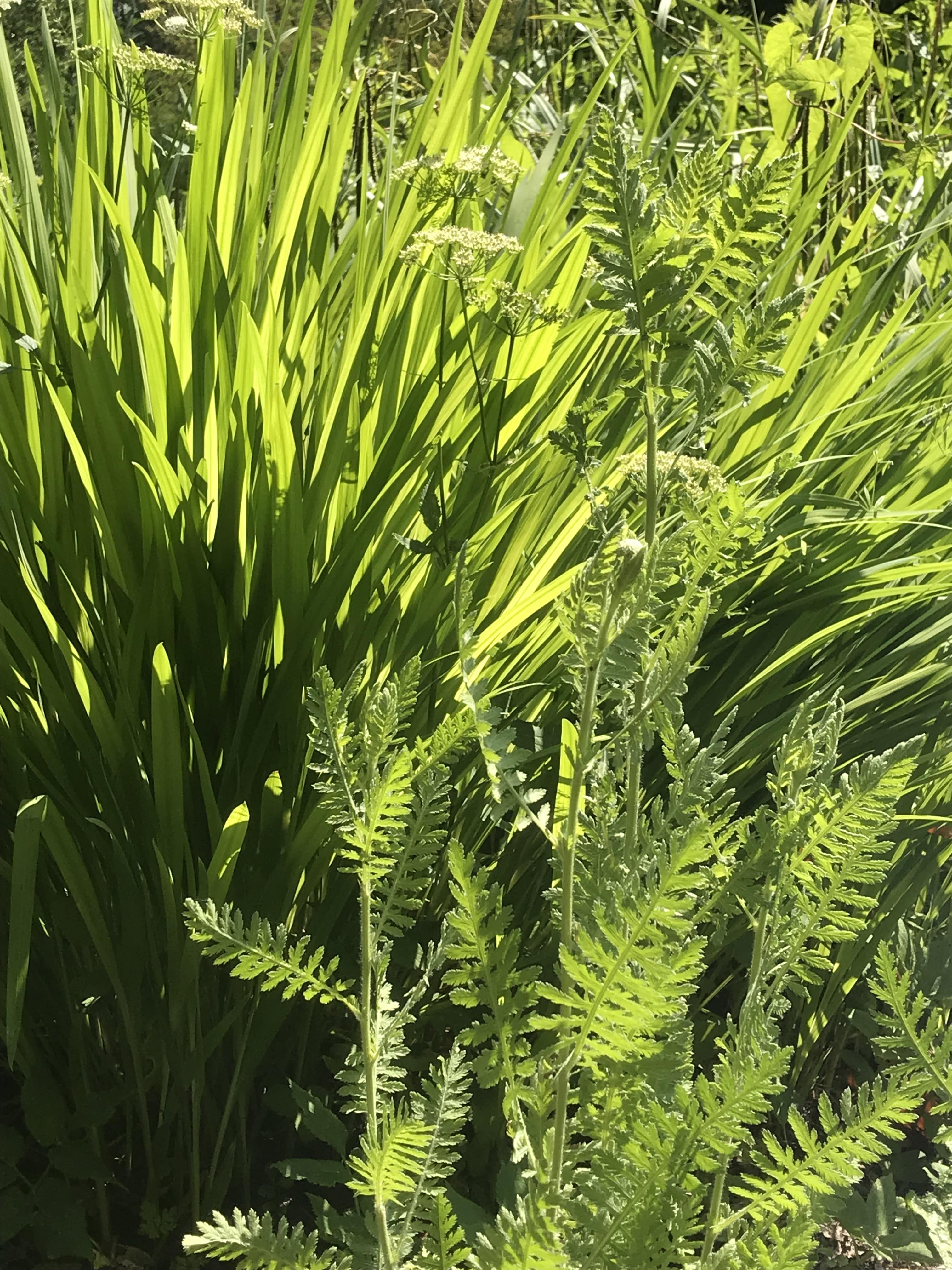

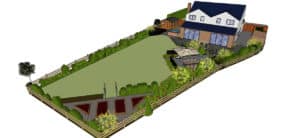
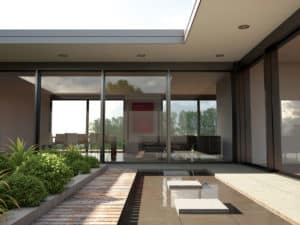
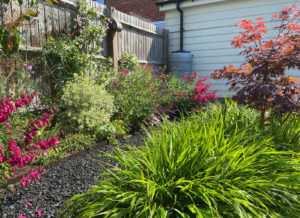
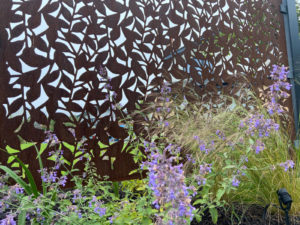
No Comments